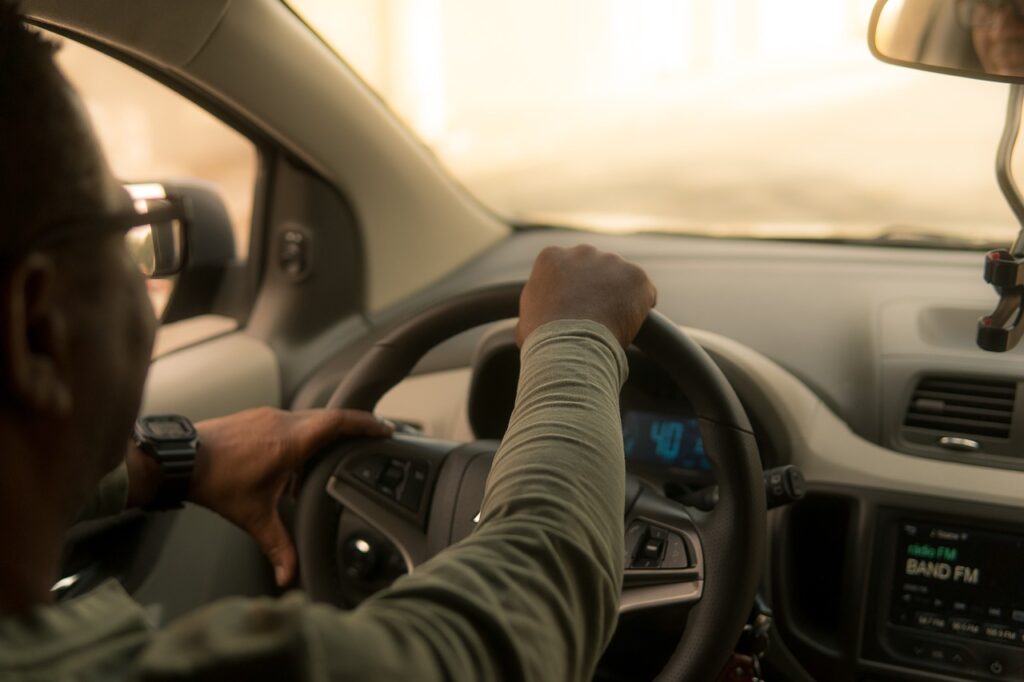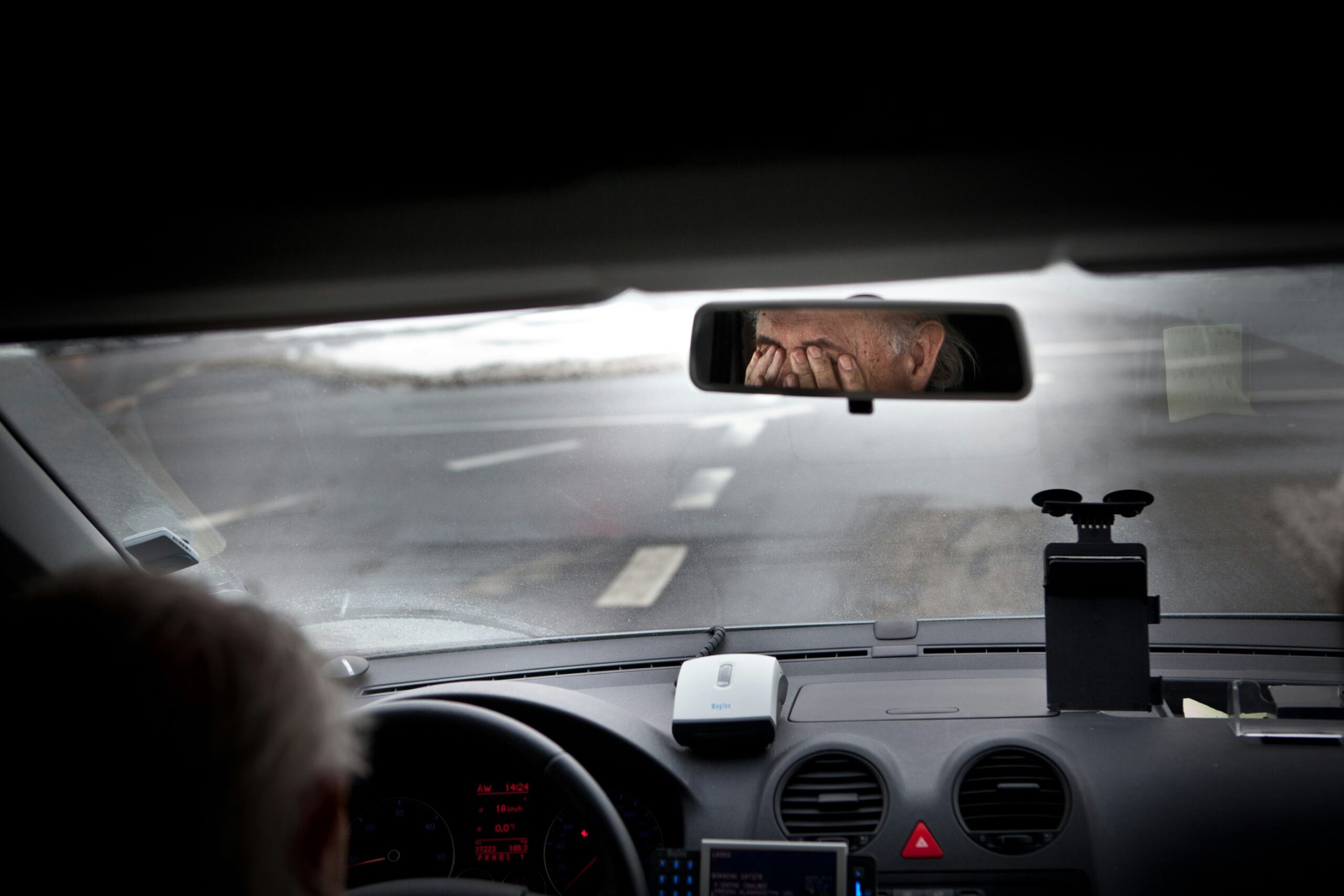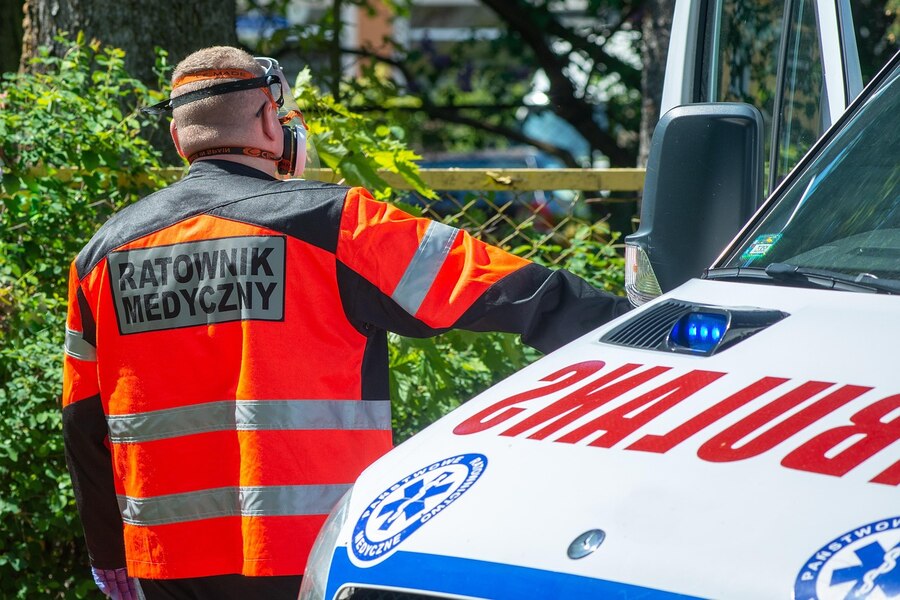Handling the Aftermath of a Car Accident in Singapore
Car accidents in Singapore are unfortunately common. When you’re involved in one, it can be stressful figuring out who’s at fault and how to deal with insurance. The Barometer of Liability Agreement (BOLA) helps simplify this process.
One of the key things to understand is how liability is determined. In Singapore, the Barometer of Liability Agreement (BOLA) plays a significant role in simplifying this process. BOLA is like a set of guidelines that insurance companies use to figure out who’s at fault in a car accident. This directly impacts your insurance payouts and your valuable No-Claim Discount (NCD), which helps lower your car insurance premiums.
Having a solid understanding of BOLA gives you a strong advantage when handling car accidents and insurance claims. It empowers you to understand your rights, protect yourself from unfair claims, and ensure you receive a fair settlement if you’re ever involved in an accident. Think of it as your guide to navigating car accident liability and motor insurance claims in Singapore.
In this comprehensive guide, we’ll break down everything you need to know about BOLA. We’ll explore how it works, the different accident scenarios it covers, and the tips and tricks to protect yourself and your NCD.
Understanding BOLA and its Impact on Car Insurance Claims
Let’s take a closer look at BOLA and how it applies in Singapore. Knowing this agreement is your guide through the complexities of car accidents and insurance claims.
What is BOLA?
The Barometer of Liability Agreement (BOLA) is like a guidebook that insurance companies in Singapore use to figure out who’s at fault in a car accident. It’s a set of rules, but not strict laws, that help them decide who is responsible when cars bump into each other. This helps make sure everyone is treated fairly when dealing with motor insurance claims Singapore.
How BOLA Works in Singapore
Think of BOLA as a set of scenarios with pictures. Each picture shows a different type of accident, like when a car hits another car from behind or when someone is changing lanes. BOLA has a chart that says who is usually more at fault in each situation.
For example, if you accidentally rear-end someone (hit them from behind), BOLA says you are probably more at fault. But, if the car in front of you suddenly brakes for no reason, then they might share some of the blame.
BOLA was created by a group called the General Insurance Association (GIA). They wanted to make sure insurance companies handle accidents in the same way, so everyone is treated fairly. You can learn more about them.
Benefits of BOLA
Faster Claims – BOLA helps insurance companies decide faster who is at fault, so you can get your car fixed sooner.
Fewer Arguments – BOLA helps prevent arguments between drivers and insurance companies because everyone follows the same guidelines.
Fairness – BOLA makes sure everyone is treated fairly, no matter which insurance company they use.
Limitations of BOLA
Not for Every Accident – BOLA is helpful for common accidents, but sometimes accidents are more complicated, and BOLA might not have all the answers.
Not a Law – BOLA is a guide, not a law. So, sometimes insurance companies might need to look at other things, like what witnesses say or pictures from the accident, to decide who is at fault.

Tips to Protect Your NCD with BOLA
Now that you understand what BOLA is and how it works, let’s explore some practical tips to help you protect your hard-earned No-Claim Discount (NCD). Remember, your NCD is like a reward for being a safe driver, giving you discounts on your car insurance premiums. But even a small accident can affect it, so it’s important to be prepared and know how to protect yourself.
Practice Safe Driving
The best way to protect your NCD is to avoid accidents altogether. Here are some tips to help you stay safe on the roads:
Follow the Rules – Always follow traffic rules, signs, and signals. This might seem obvious, but even small mistakes like speeding or running a red light can lead to accidents.
Keep Your Distance – Maintain a safe following distance from the car in front of you. The “3-second rule” is a good guideline. When the car in front of you passes a landmark, like a lamppost, it should take you at least 3 seconds to reach the same spot. This gives you enough time to react if they brake suddenly.
Check Your Blind Spots – Before changing lanes or turning, always check your blind spots. Those areas you can’t see in your mirrors. A quick glance over your shoulder can prevent a side-swipe collision.
Stay Focused – Avoid distractions while driving, such as using your phone, eating, or fiddling with the radio. Keep your eyes on the road and your mind on the task at hand.
Be Aware of Your Surroundings – Pay attention to other road users, including pedestrians, cyclists, and motorcyclists. Anticipate their actions and be prepared to react accordingly.
Use Technology Wisely – Technology can be a great tool for safe driving. Dashcams can provide valuable evidence in case of an accident, while advanced driver-assistance systems (ADAS) like lane departure warning and automatic emergency braking can help prevent accidents in the first place.
Understand Common Accident Scenarios
Familiarize yourself with common accident scenarios and the typical BOLA liability apportionment for each. This can help you understand how fault is determined and what to expect in different situations.
Rear-end Collisions
In most cases, the driver of the rear vehicle is considered fully liable (100%) for a rear-end collision. However, there can be exceptions if the front vehicle contributed to the accident, such as by braking suddenly without a valid reason.
Lane Change Accidents
When changing lanes, it’s your responsibility to ensure the maneuver is safe and doesn’t impede other vehicles. If you cause an accident while changing lanes, you’ll likely be assigned a higher percentage of liability.
Accidents at Junctions
Accidents at junctions can be more complex, and liability assessment often depends on factors like right of way, traffic signals, and road markings. Understanding the rules of the road and being cautious at junctions can help you avoid accidents and protect your NCD.
Merging onto Expressways
When merging onto an expressway, it’s crucial to yield to traffic already on the expressway and merge smoothly. Failure to do so can result in an accident where you’re likely to be held liable.
Changing Lanes on Expressways
Similar to merging, changing lanes on an expressway requires caution and awareness of other vehicles. Always check your blind spots and signal your intentions clearly.
Accidents involving Pedestrians or Cyclists
Always be mindful of pedestrians and cyclists, especially at crossings and junctions. Give them the right of way and be prepared to stop if necessary. Accidents involving vulnerable road users can have serious consequences, both legally and in terms of your NCD.
Parking Lot Accidents
Even in parking lots, accidents can happen. Be cautious when reversing, turning, and maneuvering in tight spaces. If you hit another vehicle while parking, you’ll likely be held liable.
Gather Evidence:
If you’re involved in an accident, gathering evidence is crucial to support your claim and potentially influence the liability assessment. Here’s a checklist of evidence to collect:
Photos and Videos
Take photos and videos of the accident scene, including the positions of the vehicles, damage to the vehicles, skid marks, road conditions, traffic signals, and any other relevant details.
Witness Statements
If there are any witnesses to the accident, get their contact information and ask them to provide a written or recorded statement of what they saw.
Police Report
Obtain a copy of the police report, which will include details of the accident, statements from involved parties, and any citations issued.
Dashcam Footage
If you have a dashcam installed in your vehicle, ensure you save the footage of the accident. Dashcam footage can provide invaluable evidence in determining liability.
Understand Liability and NCD
Contributory Negligence
In some accidents, both parties might share some degree of fault. This is known as contributory negligence. For example, if you rear-end someone but they were driving without their taillights on, they might be found partially liable as well. The percentage of liability assigned to each party will affect how their NCD is impacted.
NCD Protection
Consider adding NCD protection to your car insurance policy. This add-on allows you to make a certain number of claims within a policy period without affecting your NCD. It can be a worthwhile investment, especially if you drive frequently or in high-traffic areas.
Private Settlements
For minor accidents where liability is clear and both parties agree, you might consider a private settlement. This involves resolving the matter directly with the other party without involving insurance companies. Private settlements can help protect your NCD and avoid potential premium increases. However, it’s important to exercise caution and ensure you have a clear agreement with the other party to avoid future disputes.
By following these tips, understanding common accident scenarios, and being prepared to gather evidence, you can significantly increase your chances of protecting your NCD and navigating the car insurance claims process smoothly in Singapore.
What to Do After a Car Accident in Singapore
So, the unexpected has occurred. You’ve been in a car accident, and now it’s time to handle the next steps. It can be a scary and stressful experience, but knowing what to do can make a big difference in protecting yourself and ensuring a smooth claims process. Here’s a step-by-step guide to help you navigate the aftermath of a car accident in Singapore:
Immediate Actions:
Ensure Safety First:
- Check for injuries – Your first priority is to make sure everyone is okay. Check yourself and any passengers for injuries. If anyone is hurt, even if it seems minor, call for an ambulance immediately (dial 995 in Singapore).
- Move to safety – If it’s safe to do so, move your vehicle to the side of the road to avoid blocking traffic. Turn on your hazard lights to warn other drivers.
- Warn oncoming traffic – If the accident is more serious or there are injuries, consider setting up warning triangles to alert oncoming traffic, especially if visibility is limited.
Exchange Information:
- Be polite and calm – Even if you’re feeling shaken up, try to stay calm and polite when interacting with the other driver(s).
- Exchange details – Exchange contact and insurance information with everyone involved in the accident. This includes:
- Full name
- Contact number
- NRIC/FIN number (if comfortable sharing)
- Address
- Vehicle registration number
- Insurance company name and policy number
- Gather witness information – If there are any witnesses to the accident, try to get their contact information as well. Their statements can be valuable for your claim.
Document the Accident Scene:
- Take photos and videos – Use your phone or camera to take clear photos and videos of the accident scene from various angles.
- Capture key details – Make sure to document:
- The position of all vehicles involved
- Damage to all vehicles (close-up and overall views)
- Skid marks on the road
- Road conditions (wet surface, potholes, debris)
- Traffic signals and road signs
- The surrounding environment (buildings, landmarks)
- Any other relevant details that might be helpful for your claim
Report the Accident to the Police:
- Legal requirement – In Singapore, it’s a legal requirement to file an accident report with the police within 24 hours of the accident, especially if there are injuries or significant damage to property.
- How to report – You can file a report online through the Singapore Police Force e-Services website or visit the nearest police station in person.
- Information to provide – Be prepared to provide details about the accident, including the date, time, location, and a description of what happened, along with the information you exchanged with the other driver.
Notify Your Insurer Promptly:
- Contact your insurer – Call your insurance company as soon as possible to report the accident, ideally within 24 hours.
- Provide necessary information – Give them all the necessary information and documents, including:
- The accident report from the police
- Photos and videos of the accident scene
- Witness statements, if any
- Your own account of the accident
- Follow their guidance – Your insurer will guide you through the claims process, explain the BOLA guidelines, and advise you on the next steps.
Seeking Medical Attention:
- Don’t ignore injuries – Even if you feel fine immediately after the accident, it’s important to seek medical attention, especially if you experience any pain or discomfort later. Some injuries, such as whiplash or concussion, might not be immediately apparent.
- Document injuries – Seeking medical attention not only ensures your well-being but also helps document any injuries for insurance purposes. Your medical reports can be valuable evidence for your claim.
Remember:
- Stay calm. Remain calm and composed after the accident, even if you’re feeling stressed or shaken.
- Avoid admitting fault. Don’t argue with the other party or admit fault at the scene. Let the insurance companies and potentially the police determine liability.
- Be honest and accurate. Provide honest and accurate information to the police and your insurer.
- Keep records. Keep detailed records of all communication and documents related to the accident and your claim.
By following these steps, you can help ensure a smoother claims process and protect your rights and interests under BOLA.
BOLA and Private Settlement Agreements
So, you’ve had a minor accident, and you and the other driver pretty much agree on who’s at fault. Maybe it was a small fender bender in a parking lot, and you know you were the one who reversed into the other car. In situations like this, you might be wondering if you have to go through the whole insurance claim process. The good news is, you might have another option which is a private settlement.
What is a Private Settlement?
A private settlement is when you and the other driver involved in an accident agree to settle the matter between yourselves, without involving your insurance companies. It’s like agreeing to fix a broken toy with a friend instead of asking your parents to buy a new one.
Why might you consider a private settlement?
Faster Resolution – Private settlements can often be resolved much faster than going through insurance companies. You can agree on the repair costs and get your car fixed sooner.
Protect Your NCD – One of the biggest advantages of a private settlement is that it can help protect your No-Claim Discount (NCD). If you make a claim through your insurance, even if you’re not entirely at fault, your NCD might be affected. With a private settlement, you can avoid this and keep your hard-earned discount.
Potential Cost Savings – Sometimes, settling privately can be more cost-effective than going through insurance. You might be able to negotiate a lower repair cost or avoid paying your insurance excess.
When to Consider a Private Settlement:
Minor Damage – Private settlements are generally suitable for accidents with minor damage where repairs are relatively inexpensive.
Clear Liability – It’s best to consider a private settlement when liability is clear and both parties agree on who is at fault. This avoids potential disputes and complications later on.
Agreement Between Parties – Both parties involved must be willing to cooperate and negotiate in good faith to reach a fair agreement.
How to Negotiate a Private Settlement:
Assess Repair Costs – Get quotes from reputable workshops to determine the actual cost of repairs.
Consider Other Expenses – In addition to repair costs, consider other expenses like transportation costs or medical bills, if applicable.
Negotiate Fairly – Discuss the liability apportionment with the other party and negotiate a fair settlement amount. You can use the BOLA guidelines as a reference point for determining fault.
Document the Agreement – Once you reach an agreement, put it in writing and have both parties sign it. This helps avoid misunderstandings or disputes later on.
Risks of Private Settlements:
While private settlements can be beneficial, its important to be aware of the potential risks:
Disagreements – Even if you initially agree on liability and costs, disagreements can arise later, especially if hidden damage is discovered or if one party fails to honor the agreement.
Future Complications – If injuries surface later or if the damage turns out to be more extensive than initially thought, it might be difficult to re-open the case or seek further compensation after a private settlement.
Lack of Legal Protection – Unlike insurance claims, private settlements don’t offer the same level of legal protection or recourse if things go wrong.
When to Involve Insurers:
It’s generally advisable to involve your insurance company in the following situations:
Injuries – If anyone is injured in the accident, it’s crucial to involve your insurer to ensure proper medical care and potential compensation for injuries.
Significant Damage – If the damage to the vehicles is substantial, it’s best to involve your insurer to ensure a fair assessment of repair costs and potential compensation.
Disputes on Liability – If there’s disagreement on who is at fault, involving your insurer can help determine liability based on evidence and the BOLA guidelines.
Lack of Cooperation – If the other party is unwilling to cooperate or negotiate fairly, it’s best to involve your insurer to protect your interests.

Contesting a BOLA Decision
You’ve been in an accident, and the insurance companies have applied BOLA to determine who’s at fault, but you don’t agree with the outcome. Now, what do you do? Don’t worry, you’re not alone! Sometimes, things aren’t always clear-cut, and you might feel the BOLA guidelines haven’t been applied fairly in your case. The good news is, you have the right to challenge the decision.
Understanding Your Rights:
It’s important to know that you have a say in the process. If you believe the insurance company got it wrong, you can speak up. But before you do, it’s helpful to understand the BOLA guidelines yourself. This will help you see if the decision makes sense or if something seems off.
Contesting the Decision:
Here’s how you can challenge a BOLA decision:
Talk to Your Insurer
The first step is to talk to your accident insurance company. Explain why you disagree with their decision and provide any evidence you have to support your case. Sometimes, a simple conversation can clear things up, and they might reconsider their assessment.
Gather Strong Evidence
If talking doesn’t work, it’s time to gather strong evidence to back up your claim. This might include:
Photos and Videos – Clear images and videos of the accident scene, showing the position of the vehicles, damage, and road conditions.
Witness Statements – If there were any witnesses, get their written statements about what they saw.
Dashcam Footage – If you have a dashcam, the footage can be very helpful in proving what happened.
Expert Opinion – In some cases, you might need to get an expert opinion, like from an accident reconstruction specialist, to support your claim.
Get Help from FIDReC
If you’re still not getting anywhere with your insurer, you can ask for help from a special group called the Financial Industry Disputes Resolution Centre (FIDReC). They help people who have problems with financial companies, like insurance companies.
Talk to a Lawyer
If things get really complicated, you might need to talk to a lawyer who knows about car accidents and BOLA. They can help you understand your rights and guide you through the process.
Important Things to Remember:
Be Polite and Respectful – Even if you’re frustrated, it’s important to stay calm and polite when dealing with your insurer or FIDReC.
Keep Records – Keep copies of all your communication with the insurance company, FIDReC, or any other parties involved.
Don’t Give Up – Contesting a BOLA decision can take time and effort, but it’s important to stand up for yourself if you believe you’ve been treated unfairly.
By understanding your rights and following these steps, you can increase your chances of successfully contesting a BOLA decision and getting a fair outcome for your car accident claim.
Your Guide to Understanding Car Accident Liability and Insurance Claims
Driving in Singapore comes with its own set of challenges, from navigating busy roads and tricky junctions to, unfortunately, the possibility of being involved in a car accident. Understanding the Barometer of Liability Agreement (BOLA) is a crucial step towards protecting yourself as a driver. By familiarizing yourself with its guidelines and following the tips we’ve shared, you can better safeguard your interests, your No-Claim Discount (NCD), and navigate the often-complex world of motor insurance claims in Singapore.
Personal Accident Insurance vs. Motor Insurance:
- Motor insurance primarily covers damage to your vehicle and third-party liability (damage or injury you cause to others).
- Personal accident insurance focuses on you and your passengers, providing coverage for medical expenses, disability, and death benefits.
Having both motor insurance and personal accident insurance ensures comprehensive protection in case of a car accident.
Remember, though, that the best way to protect yourself is to avoid accidents altogether. Practice safe driving habits, be aware of your surroundings, and always prioritize safety on the road. Here are some key takeaways to keep in mind:
- Drive Defensively – Be alert, maintain a safe following distance, and anticipate the actions of other drivers.
- Follow Traffic Rules – Adhere to traffic signals, signs, and road markings.
- Avoid Distractions – Put away your phone and avoid any activities that could take your attention away from driving.
- Maintain Your Vehicle – Ensure your vehicle is in good working condition with regular maintenance.
- Be Prepared – Have important documents like your driver’s license, insurance information, and emergency contact numbers readily available.
While BOLA helps simplify the liability assessment process, accidents can still have significant financial and emotional repercussions. In such situations, having comprehensive personal accident insurance can provide much-needed financial support and peace of mind.
We’ve covered a lot about BOLA, how it works, and how you can protect yourself after a car accident. But even the most careful drivers can find themselves in unexpected situations on the road. That’s where having the right insurance coverage can make all the difference.
Your Partner in Personal Accident Insurance
SG Accident is a trusted personal accident insurance provider in Singapore. We’re dedicated to helping individuals and families recover from accidents, both physically and financially. We understand that accidents can be a stressful and overwhelming experience, and we’re here to provide support and peace of mind during those challenging times.
Why Choose Us?
- Upfront Cash Incentives – We offer a unique benefit that sets us apart: upfront cash incentives. Unlike traditional insurance claims that can take time to process, we provide immediate financial assistance after an accident. This can be a lifesaver when you’re facing medical bills, repair costs, or loss of income.
- Comprehensive Coverage – We offer a wide range of personal accident insurance plans to suit your individual needs and budget. Our plans cover a variety of accidents, including car accidents, falls, sports injuries, and more. We can help you find the right coverage to protect yourself and your loved ones.
- Expert Advice and Guidance – Our team of experienced professionals is here to help you every step of the way. We can answer your questions about coverage, guide you through the claims process, and advocate for you to ensure you receive a fair settlement.
How SG Accident Can Help with Your Car Accident Claim
- Claim Assistance – We can help you file your claim and gather the necessary documentation. We’ll also work with your insurer to ensure your claim is processed quickly and efficiently.
- Financial Support – Our upfront cash incentives can provide immediate financial assistance to help you cover medical expenses, rehabilitation costs, and loss of income, reducing the financial burden during your recovery.
- Peace of Mind – Knowing that you have comprehensive personal accident insurance can provide valuable peace of mind, allowing you to focus on your recovery without worrying about the financial implications of the accident.
Need Help with a Car Accident Claim? SG Accident is Here for You
Don’t face the aftermath of an accident alone. Contact SG Accident today to learn more about our personal accident insurance plans and how our unique upfront cash incentives can provide vital support when you need it most. We’re committed to helping you navigate the challenges and get back on your feet with confidence.
Protect yourself under Singapore’s BOLA with expert tips from SG Accident. Learn how to handle car accidents and safeguard your No-Claim Discount (NCD).
The Barometer of Liability Agreement (BOLA) plays a key role in Singapore’s road transport industry by standardizing how car accident liability is determined. Understanding BOLA is crucial for drivers in Singapore, as it helps you navigate accident claims, protect your No-Claim Discount (NCD), and secure a fair settlement. This guide covers the essentials of BOLA, its benefits, and its limitations, ensuring you’re prepared in the event of an accident.



